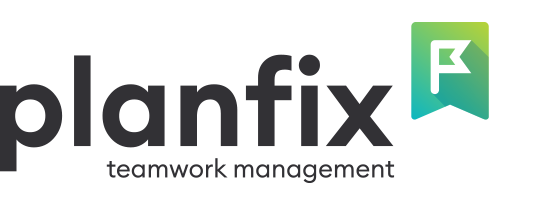
Technology never stands still. Every year, it surprises us with new possibilities and solutions. 2025 promises to be a particularly critical time for tech, with new and exciting IT trends reshaping businesses and opening new horizons for growth and development. Understanding these changes is essential for IT professionals and any company aiming to stay ahead, meet customer needs, and strengthen its market position.
According to Gartner, global IT spending will reach US $74 trillion in 2025, an increase of 9.3% over 2024. Predictions indicate that these investments will mostly focus on technologies that automate processes, increase efficiency, and improve customer loyalty. In this article, we’ll examine the key IT trends that are expected to impact businesses the most.
Artificial Intelligence and Machine Learning
Artificial Intelligence and Machine Learning, abbreviated as “AI” and “ML,” respectively, are at the forefront of the digitalization revolution. In fact, a recent McKinsey study shows that more than 50% of companies already use AI in at least one business function, a figure that is expected to increase significantly by 2025.
AI can support companies in the following ways:
- Personalizing customer experiences. AI can quickly analyze customer behavior, delivering real-time tailored solutions.
- Automation of routine tasks. AI-powered systems are able to handle a wide range of customer queries and data analysis tasks, reducing operational costs.
- Forecasting and analysis. AI is able to help businesses with everything from inventory management and demand forecasting to identifying supply chain bottlenecks.
For companies, investing in AI is more than just a trend — it’s a strategic step towards increasing profitability and competitiveness.
Advanced Computing
High-performance computing and quantum technologies are essential players in the evolving IT landscape. Although they are still in their infancy, they have enormous potential for businesses across a wide range of industries.
Key benefits include:
- Advanced computing accelerates financial modeling and logistics optimization tasks, allowing businesses to solve complex problems more quickly.
- Real-time data processing enables companies to use their analyses and make informed decisions in a fraction of the time.
Hybrid Computing and SaaS
Cloud technologies and Software-as-a-Service solutions are becoming more and more common. According to Fortune Business Insights, the SaaS market will grow 18.4 percent, from US $317.55 billion in 2024.
Benefits of SaaS include:
- Increased flexibility and scalability. SaaS solutions adapt quickly to market changes, which can give businesses an edge in rapidly-evolving industries.
- Cost reduction. Instead of investing in expensive hardware, businesses can pay for subscriptions on an as-needed basis.
If your company has yet to adopt cloud or hybrid solutions, 2025 is a good time to revisit your overall strategy.
Internet of Things
The Internet of Things, or IoT, is yet another aspect of modern tech that is increasingly being integrated into business processes. Statista predicts that by 2025, there will be 20.1 billion connected IoT devices.
Practical applications include:
- Monitoring equipment, which can prevent downtime through proactive maintenance and early failure warnings.
- Innovative building systems help to optimize energy consumption.
- Logistics and supply chain management can aid in improving operational efficiency.

While there are clear benefits, it’s important to note that the IoT also requires increased attention to security, and can sometimes pose integration issues.
Sustainability and Green Technologies
As we move into 2025, sustainable development and resource conservation will remain top priorities for businesses. Of course, technology can play a crucial role in minimizing a company’s carbon footprint while optimizing resource use.
Examples of sustainable solutions:
- Energy-efficient data centers.
- Artificial intelligence enables businesses to streamline supply chains by improving inventory management.
- With blockchain and other traceability technologies, businesses can provide end-to-end visibility into their supply chains, increasing customer trust.
Investing in sustainable technologies not only gives companies a competitive advantage, but helps to align their enterprise with modern ideals.
Virtual Reality and Augmented Reality
Grand View Research estimates that the VR/AR market will be worth US $83.65 billion by the end of 2024, with a projected compound annual growth rate of 37.9% between 2025 and 2030. Nowadays, these technologies are used in a wide range of industries, from education to customer engagement.
Possible applications include:
- Employee training. Both virtual and augmented reality can be used to create safe and effective learning environments.
- AR can be used to showcase products before purchase, allowing for better, more engrossing demonstrations
- Leveraging VR for product development can lead to more proactive prototyping and, therefore, better final products
VR and AR are not only effective at streamlining processes, but can help companies stand out in increasingly-competitive markets.
Cybersecurity and Digital Trust
The increase in connected devices has led to a rise in cyber threats. IBM reports that the average cost of a data breach in 2024 will be US $4.88 million—a 10% increase from the previous year and the highest figure on record. As a result, it’s no surprise that protecting data will be a top priority for businesses in 2025.
Security measures include:
- Investing in Endpoint Detection and Response (EDR) systems to enhance an organization’s ability to detect, prevent, and respond to cybersecurity threats at the device level.
- Developing comprehensive digital trust strategies to ensure secure interactions and build confidence among customers, partners, and stakeholders.
- Training employees in the basics of cyber security to create a knowledgeable workforce capable of identifying and mitigating common threats and vulnerabilities.
Data protection is no longer optional. In the digital world protecting a company’s information and reputation are absolutely essential.
Conclusion
As you can see, the biggest IT trends of 2025 focus around tools that can help businesses adapt to a changing world. Technologies like AI, hybrid computing, and the growing IoT offer new opportunities to increase efficiency and strengthen market position. In the end, those companies that prepare now will be able to confidently navigate the future and remain competitive and relevant in an increasingly tech-driven market.

